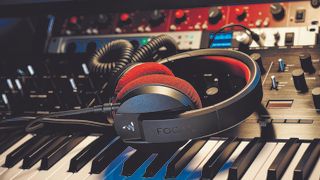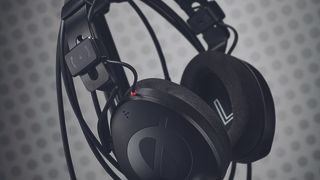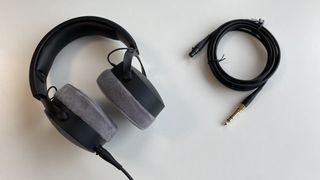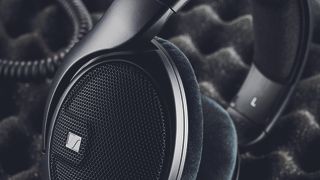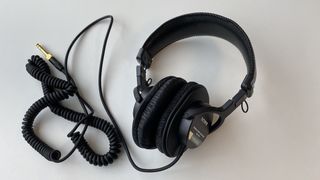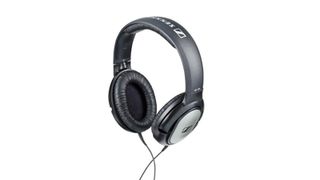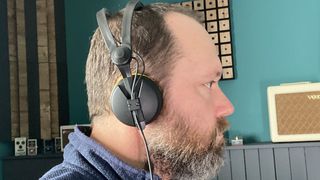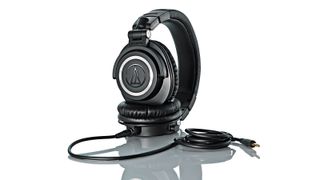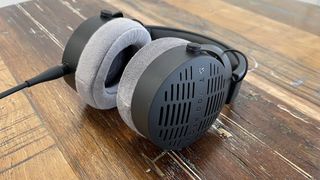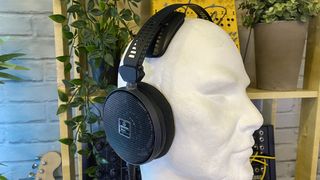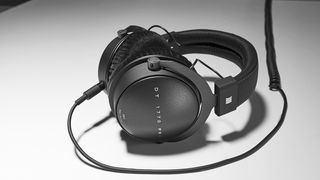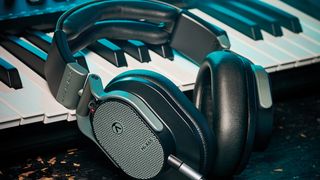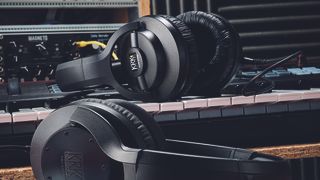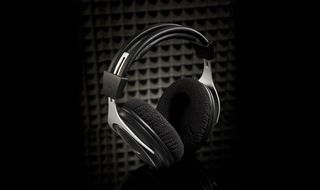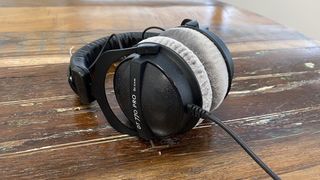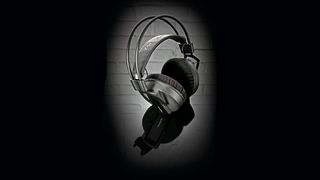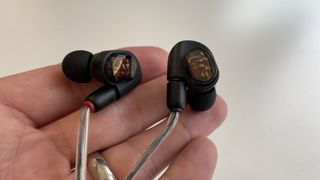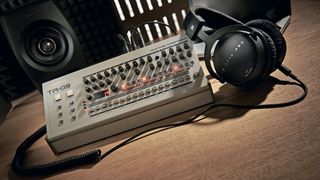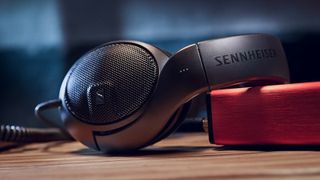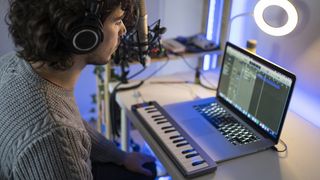Best studio headphones 2023 | MusicRadar
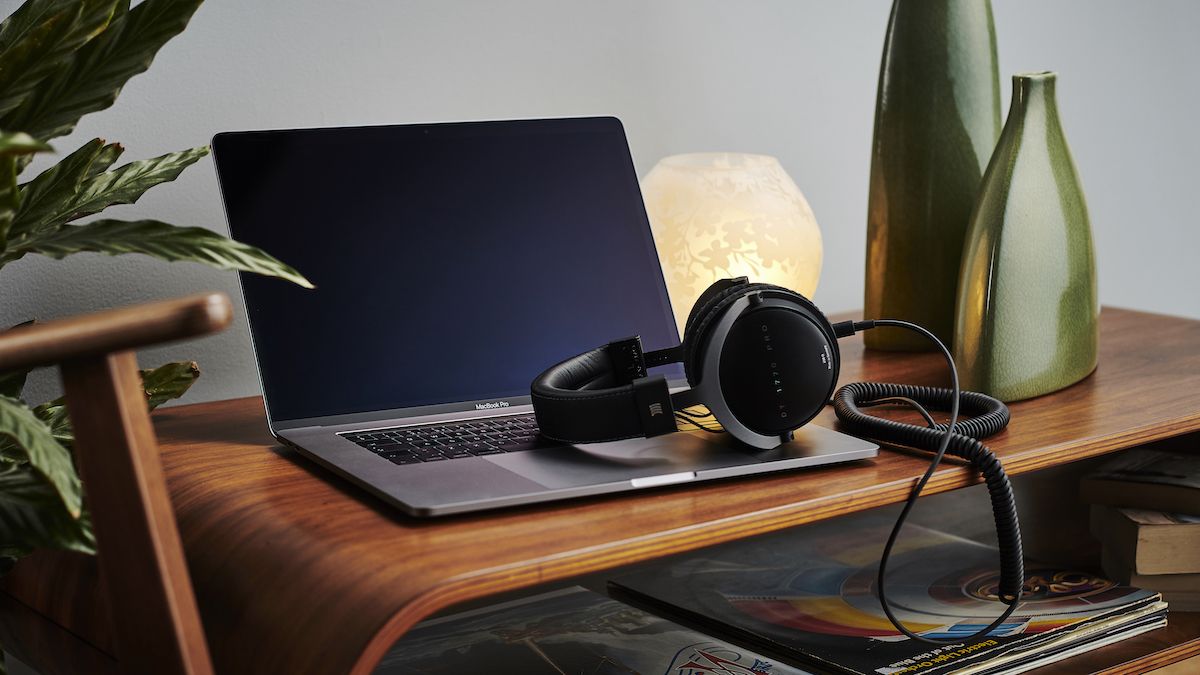
When creating a studio set-up, a lot of emphasis is placed on the quality of your monitors and acoustic properties of your room, but we’d argue that a pair of the best studio headphones is equally important. Any credible producer or mix engineer knows how important it is to A/B a mix on different listening devices, and in many ways your headphones and monitors should be seen as two sides of the same coin.
While it’s a slightly controversial opinion, we’ve encountered plenty of producers that prefer using headphones as their primary tool for making creative and mix decisions. However you prefer to work, headphones are essential for assessing stereo image, low-end and fine detail within a mix. Just like speakers, it’s important to choose the right pair of studio headphones, but it is a very personal choice.
The best studio headphones should be honest and clear – able to reproduce your projects in a way that gives you an accurate sonic picture of every aspect of the frequency range. There are plenty of factors to consider beyond just the sound though – comfort and durability are equally important, and it’s also worth considering whether or not you want a pair that can double up for day-to-day listening duties too.
To help with your choice, this guide to the best headphones for music production includes our top picks. We’ve rigorously tested every model and have highlighted the strengths, weaknesses and suitability for different musical disciplines below.
We’ve included some buying advice at the bottom of this guide, so if you’re here to learn more about the best studio headphones, we’d recommend starting there. If you’d rather get straight to the products, our top picks are up next.
Our price comparison software has also found the best prices on the web right now, so you can be sure you’re grabbing the best deal once you’ve settled on the right pair for you.
Best studio headphones: Our top picks
If you’re looking for a great pair of budget studio headphones, then our pick of affordable studio headphones has to be the Sennheiser HD-206 (opens in new tab). These are wallet-friendly headphones that have been around for ages, but the overall performance that they offer is anything but bargain-bucket. They’re great for use in the studio, plus they’re supremely light, comfortable and durable for those extra long days of recording and mixing.
Our mid-priced and mid-range pick has to be the Sony MDR-7506 (opens in new tab). They’ve featured in recording studios, radio stations and DJ booths for well over 35 years, and continue to be regarded as one of the very best. For under $/£100, it’ll be tough to find cans that match up.
As you move further up the price scale, the decisions get a little more difficult. We’d gladly recommend the Focal Listen Professional (opens in new tab) as our pick for those with a little more cash to splash. They’re competitively priced and have an excellent pedigree (Focal is among the most highly-regarded monitor manufacturers out there), and we doubt you’ll find a better pair of studio headphones for similar money.
At a similar price point, the Røde NTH-100s are some of the best headphones we’ve tested recently, with sound and build quality up with the best out there.
Best studio headphones: Product guide
The Focal Listen Professionals are exactly what they say on the tin; ideal for both listening and pro duties. This puts them firmly top of the class in the all-rounder category. Overall, we found the fit to be snug, but not too tight that they made long periods in the mixing saddle unbearable.
In fact far from it, the longest period of time we had them on for was around three hours, with the main issues just being back pain and the lack of blinking. While many engineers and audio specialists might prefer open-backed designs for their lack of fatigue, the closed-back Listen Pros perform admirably in this regard.
We found the response of these cans to be perfectly balanced, with remarkably neutral, punchy bass with plenty of extension, full, clear mids and sparkling, smooth highs. Complete with a beautiful hard-shell case, we don’t think there’s a better all-round studio headphone out there at this price.
Read our full Focal Listen Professional review
Røde has been in the market making more than just microphones for a good while now. With mixers aimed at podcasting and small audio interfaces for content creators, it is little wonder the company should now develop its first pair of headphones, the over-ear NTH-100s.
Australian firm Røde is known for offering quality at competitive price points, and these debut headphones are no different. Much attention has gone into tuning the earcups – which we found have a distinctive, elongated shape for a more natural fit – and drivers so that they can deliver a fine balance of focus and width in the soundstage.
The NTH-100s are innovative in their design, and offer clear and faithful sound, comfort and quality construction throughout. These are some of the best headphones we’ve tested recently.
Read the full Røde NTH-100 review
An upgrade both price and features-wise from the DT 770 Pro found elsewhere on this best studio headphones list, the DT 700 PRO X features an updated look, even squishier earpads and improved sound thanks to a new STELLAR.45 transducer design with a faster response. This enables a detailed transient response and a reliable sound that’s distortion-free even at high sound pressure levels.
Since the 770 PRO X is available with a single 48Ω impedance rating, these are a worthwhile pick for both studio and everyday applications, while remaining one of the more comfortable cans we’ve tried over long periods. That and the fact that the earpads, headband pad and cables can all be easily replaced – you get a choice of two cables already in the box – make these a solid choice if you want to level up from the 770 Pro.
Read our full Beyerdynamic DT 700 PRO X review
Sennheiser’s Pro-branded cans sound excellent. There’s complexity that lesser headphones just don’t convey. There’s clarity and balance aplenty too, but not the cold, hard treble-toppy steeliness that’s often mistaken for transparency. Instead, there’s a measured vividness; an equality where the mids, lows and highs co-exist without fighting one another.
Unlike some closed-back headphones that overblow bass frequencies due to build-up of pressure, the HD 400s allow for natural airflow, which not only improves the soundstage but also adds to the comfort when wearing them for long periods.
These are quality headphones that you’ll happily be able to trust when making creative decisions.
Read our full Sennheiser HD 400 Pro review
The Sony MDR series has been around for years and has a solid studio pedigree, borne out by many decades of daily use in the recording and broadcast sectors worldwide. The current incarnation, the MDR-7506 is a brilliant combination of comfort, practicality and value.
In our experience these are extremely comfortable to wear for extended periods, and are designed to expose what’s wrong with a recording rather than what’s right. On a par with other cans costing twice as much, in action the sound is punchy and clear throughout the spectrum (with a moderate boost in the upper mids), while managing not to be overly-flattering.
So all in all the fact that these workhorse cans are available for well under a hundred dollars/pounds is not to be sniffed at.
Read our full Sony MDR-7506 review
If you’re in the market for a cheap pair of headphones for everyday studio use, you need to check out the Sennheiser HD-206. Bearing the well-respected Sennheiser name on the headband, the extremely tough and durable HD-206’s are comfortable to wear for extended periods.
Remarkably accurate for the money, the HD-206’s measure up more than favourably to much pricier peers. We found the bass response in particular to be rich and crisp, with plenty of detail also to be found in the mids and highs – making these potentially some of the best guitar amp headphones if you’re of the axe shredding persuasion.
The hypoallergenic ear pads are more than adequate for blocking out extraneous noise whether in the studio or out on the move, and at this price, you need never fear recklessly throwing these in your laptop bag. Grab a pair before Sennheiser realise how good they are and raise the price.
Read our full Sennheiser HD-206 review
Another long-standing studio favourite of ours, HD-25’s are acclaimed by pros for their ability to handle high sound pressure levels and deliver excellent sound reproduction. A stalwart of the DJ booth thanks to their split headband, rotatable earpieces and reputation for durability, the HD-25s delivers punchy and accurate sound in a lightweight yet robust package.
Classified as an on-ear design, because the pads are circular and rest on the outside of the ear rather than enclosing it fully, the HD-25 is currently available in three flavours (Light, Standard and Plus) at three price points, for general studio/DJ duties you really can’t go wrong with a pair of Sennheiser HD-25’s.
Read our full Sennheiser HD 25 review
The reissued M50 (‘x’ = detachable cable) is a popular model across the audio world, competing directly with big players like Beyerdynamic and AKG. They are comfortable, fold and bend in all the right places, and are relatively light at just 285g.
The sound quality is good overall, though in our tests they did shy away from a detailed, airy HF region. The mids are clear and forward, while the bottom-end extends down without any peaky resonances. As with all the low impedance designs in this guide (these are 38 ohm), they are easily driven beyond our comfort threshold.
Read our full Audio-Technica ATH-M50x review
These all-new Beyerdynamic ‘phones bridge the gap between, but do not replace, the other two models in this round-up (the DT 1770 and DT 770 Pro). They feature an updated driver design, detachable cables, a sleeker, more modern look and one fixed impedance rating, making them suitable for a more diverse range of applications. These upgrades are reflected in the higher price point, coming in at roughly $/£100 more than the older PRO models.
As the open-back member of the squad, the DT 900 PRO X is Beyer’s suggestion as a weapon of choice for critical listening and mastering. They’re also some of the best mixing headphones on the block. There’s also a closed-back version, the 700 PRO X, that retails for the same cash.
The 900’s are probably the most comfortable full-size cans we’ve tried, but isolation from external noise is not the greatest, as you’d expect from open-back cans. Sound-wise, they have a flattish profile delivering each frequency range without bias or favour. Your ears will be privy to a refreshingly accurate portrayal of what’s actually there, exactly what you want from something that’s marketed as a studio reference monitor headphone. They will do an excellent job of revealing any issues in your own projects, quick to shine a light on any problem areas that may need attention.
Read our full Beyerdynamic DT 900 Pro X review
Open-back designs like the ATH-R70x tend to be favoured for long mix sessions as they’re generally lighter and less fatiguing than closed-back cans, which is good news as this model has been developed especially as a reference headphone for mixing. Are they the best headphones for mixing? They’re certainly up there.
At this price and above we’ve used models with more apparent ‘air’, but we don’t consider this a deficiency – if anything, it means you’re less likely to end up with a dull mix. Down the other end the response is no less smooth with all the extension you need without the slightest hint of boom or false fatness.
Moving up, the low mids continue unwrinkled, free from cheap scooping back (a voicing often employed to mask uneven response) so you can really hear what’s going on, for better or for worse. It’s all about the mids and low mids for us, and with the R70x all the juice comes through without complications; everything appears clearly delineated and unmuddled, unless the source is otherwise.
It’s a high-impedance model, so you’ll need a suitable headphone amp to connect them to for best results.
Read our full Audio-Technica ATH-R70x review
Beyerdynamic is an audio heavyweight, responsible for the ubiquitous DT 100 tracking cans that were everywhere in the 1980’s and 90’s and are still available today. Their current range is huge, but designed specifically for mixing, the DT 1770s are exceedingly well balanced across the audible spectrum.
The mid range is free from audible phase shift, allowing the clarity essential for professional use. The sound stage projected into your head is as pleasurable as it is revealing. They provide a highly detailed view into your audio, from left to right, front to back, and even into the corners.
Being a high-impedance design, you’ll need to drive them hard, but from discrete reverb tails tucked behind a busy mid range, to tiny distortions and clips, they reproduce whatever your signal chain is capable of supplying. Audio restoration, mixing and tracking all greatly benefit from the quality the DT 1770s offer.
Read our full Beyerdynamic DT1770 PRO review
Relative newcomers to the pro headphone market, Austrian Audio fielded their latest studio-centric, open-back design in July of 2021 and have already scored a direct hit with critics and customers alike. They deliver excellent, balanced sound that remains neutral yet highly detailed, coupled with solid build quality, all leading to an enjoyable listening experience whatever the setting.
Foldable construction for added portability, twin detachable cables of different 3-metre and 1.2-metre lengths to suit a variety of tasks and soft, slow-retention memory foam earpads for extended comfort all add to the appeal.
If you’re in the market for a premium pair of headphones that excels for mixing and critical listening, the Hi-X65’s tick a lot of boxes.
Read our full Austrian Audio Hi-X65 review
KRK are best known in music production circles for their Rokit monitors, which have become ubiquitous in bedroom studios. While their headphones are lesser known, they’re impressive for their price nonetheless.
The company’s top-end KNS 8400s have recently been refreshed, now branded KNS 8402. The headphones have had a stylish visual makeover, with subdued branding and a new metal plate design on the outside of the ear cups. The result is both stylish and professional looking.
Sonically, they have a beautifully smooth high frequency response, very usable low frequency extension, a slightly subdued lower midrange and a present but not hyped upper midrange. Overall, we found them to be impressive for the price, and well tuned for mixing and mastering duties.
Read the full KRK KNS 8402 review
With a pro audio pedigree stretching back decades, Shure is a name you should be able to trust when choosing a set of headphones for your studio. In practice, the premium model SRH1540’s do not disappoint, delivering excellent acoustic performance, comfort and durability to professionals and audiophiles alike.
Offering an expansive soundstage and immaculate transient detail across the board, with clear, extended highs and warm bass in a lightweight alloy and carbon fibre architecture, the 1540’s are topped off with swish Alcantara leather earpads for supreme comfort and sound isolation.
Though far from the cheapest option on the list, the performance delivered by the 1540’s undoubtedly proves more than sufficient reward for the investment.
Read our full Shure SRH1540 review
Beyerdynamic headphones have been renowned by professionals and amateurs alike, being the to-go studio headphones for producers seeking extremely high build quality and durability.
Like the DT-1770 models – already featured in this guide – the DT-770s offer a fantastic flat frequency base, allowing you to hear exactly how your mix sounds in intense detail. In addition, the comfortable soft padded headband means you can spend hours labouring over your mix without fatigue, while the rugged design means they are sure to last.
Coming in at a far more wallet-friendly price point – compared to the DT-1770 – these fantastic headphones offer fantastic value for money and are a great first step into the world of studio headphones.
Read the full Beyerdynamic DT-770 PRO review
Headphones can be a good way to judge bass when the available monitors don’t reach down too far, and in this regard the HRM-7s don’t disappoint – they’re some of the best monitor headphones out there. There’s no hyping, just a clear picture of what’s going on down low. The low-mid and mid range are crucial for the real meat in any mix, and it can be easy to make a mess here without decent monitoring.
In our experience the HRM-7s present the detail in this range accurately; no carving out or pushing forward which are often the side effects of bass-hyped or bass light designs (respectively). The airy top, ie 15kHz and up, is all present and correct so you can control the ‘twinkle’ without second-guessing. The upper mid/early high range (5kHz) is a little overrepresented for our taste, which makes us mix this region too far back.
Read our full Pioneer HRM-7 review
Nura’s Nuraphone system is unique in that it automatically generates a personalised user profile, then tailors its response to suit your hearing, creating a bespoke listening experience. There’s almost no point in us telling you how good these headphones sound, as they’re going to sound great to you, no matter what.
The profiling is voiced in a such a way to sound very pleasing, with a crisp and detailed top-end, slightly scooped mids and haptic drivers that deliver more than enough low-end to offer plenty of depth and immersion. Of course how this is achieved differs with each user, but they perform admirably when stacked up against other headphones at a similar price point, so be prepared to find yourself going back over old mixes and making some tweaks.
Even though the Nuraphones fit firmly into the ‘listening’ category of headphones, the technology is fascinating and they do prove useful as an alternative monitoring source in the studio – perfect for those hasty club mixes if you’re missing a sub-woofer in your speaker setup.
Read our full Nuraphone by Nura review
The MP-240 uses a dynamic driver for bass and a balanced armature for the mids and highs (Mackie call it a dual hybrid design), and although this model isn’t substantially more expensive than the MP-220, we feel it’s streets ahead sonically. First up, the mid range is more defined yet overall feels less prominent, which should be less fatiguing.
However, it’s the top end where these really won for us, with clear yet smooth high frequencies delivering excellent articulation. Indeed, switching back over to the MP-220 only goes to hammer home how much better the MP-240 sounds.
Read our full Mackie MP-240 review
It’s hard to imagine even the best in ear monitors delivering a sound you can rely on for production duties, but be it tracking, sound design or mixing, the E70s impress from top to bottom. They don’t quite rival an equally-priced set of headphones, especially in the bass, a region in which physics throws up some serious constraints.
Subs are audible and there’s no low mid scooping to mask poor phase response; the bass is just less punchy than you’d get with the average studio headphones.
The mids are clear and free from fatiguing peaks, so the meat of a mix can be tackled with confidence, and even if the high frequency range is slightly soft, subtle adjustments come through clearly enough that you’ll be happy using EQ in this region.
Read our full Audio Technica ATH-E70 review
Best studio headphones: Buying advice
What are the main types of studio headphones?
When it comes to studio headphone design, there are three options to consider: Closed-back on-ear, open-back on-ear, and in-ear.
Closed-back headphones are best for recording applications as they fully enclose the ears, and the padding around the ear helps to avoid spill; which is unwanted traces of the backing track leaking out and ending up on your recording. The padding also provides an additional layer of comfort.
Spill can be a problem if your performer likes to monitor with some volume – so when recording performers with microphones – this type of headphone is definitely the route to take.
Open-back cans tend to be lighter and are therefore a bit more comfortable to wear for longer periods, but they’re generally not as common. They present a higher risk of audio spill, so are more suitable for programming and mixing duties, rather than straight recording. They also don’t block out external noise as effectively as closed-back options, so there are definitely some compromises to be made here.
In-ear monitors (aka IEM’s), meanwhile, are usually reserved for on-stage monitoring, unless they’re extremely high quality, in which case they can be suitable for use in a studio environment. In-ears wouldn’t be our first choice in this instance, but we’ve recommended a couple of quality pairs in this guide in case you’ll be splitting your time between stage and studio and only have budget for one set.
What’s the difference between studio headphones and normal headphones?
One question you might be asking is why the distinction between regular and studio headphones – why can’t I just use any old set of cans for music production? Ok, that’s technically two questions, but the answer to both is the same – most headphones that are produced for ordinary everyday listening or gaming have an inherent boost somewhere in the frequency range to enhance the listening experience, usually making things sound better by boosting the bass and treble frequencies.
In a studio headphone, this isn’t such a good idea, as you want your cans to accurately reflect the music you’re creating, rather than making it sound better than it actually is. For this reason, dedicated studio headphones will generally have been designed to exhibit a flatter frequency response than most regular cans, so that tracks made using them will sound better when played back on a wide range of systems.
You may have a pair of regular Bluetooth headphones and wonder if you can produce using those too? We weigh up the pros and cons of using Bluetooth headphones to produce music in this article.
Are studio headphones necessary?
Like the name implies, anything branded a studio headphone will have been designed especially for use in a recording studio setting, with particular focus on the tasks of tracking, programming, editing and mixing. The type of headphone you choose will be dependent on which of these tasks you’ll most need them for. An open-backed design is more prone to spill than a closed-back pair, so open-backs tend to be more useful when mixing and editing as opposed to tracking, since any spill can be picked up on microphones.
Closed-back designs are a bit more versatile as they can usually be applied to all studio-related tasks. Studio headphones also usually have less of a smiley curve response than ordinary hi-fi headphones, which often exhibit enhanced low and high-end response designed to flatter the sound and improve the everyday listening experience – not necessarily what you want from a pair of studio cans.
Do I need an amp for my studio headphones?
One key aspect of headphone design that may influence the route you take is impedance. Good ‘impedance matching’ will help your headphones work more effectively, so here you need to consider what type of gear you’ll be plugging them into. Let us explain a little deeper…
High-impedance headphones are designed for studio environments like a band recording setup, where you might find multiple sets of cans plugged into a headphone splitter box that’s receiving a high-level input signal from one source, eg. a professional headphone amplifier. Meanwhile, low-impedance headphones are designed to be plugged directly into a single source, like a hi-fi stereo amp, audio interface or mobile phone, so they’re able to generate sound more efficiently from the lower-level input signal these devices put out.
Most studio headphones on the market today have a low enough impedance that they can happily be plugged into the outputs of regular devices such as mobile phones and laptops. Some models, however, such as the Beyerdynamic DT770, are available at a variety of impedances; the higher impedance models are intended for use in a studio setting where they’ll need to be driven by a separate headphone amp in order to perform at their best.
Generally, high-impedance headphones require higher signal levels to produce the same output level of low-impedance headphones. So broadly speaking, the higher a headphone’s impedance rating, the more ‘pro’ it was designed to be. We’ve included the impedance rating with our best studio headphones choices in this guide so it’s clear what you’re getting.
Headphones frequency range and response explained
MusicRadar’s got your back
Our team of expert musicians and producers spends hours testing products to help you choose the best music-making gear for you. Find out more about how we test.
The frequency range of your headphones is a good indicator of their quality as it shows the breadth of tones they can reproduce, from bass frequencies measured in Hz up to treble measured in kHz. The wider this range, the better, as it shows your headphones are capable of reproducing more of the range of the music you are playing through them. Generally the range of human hearing is 20Hz to 20kHz with the upper figure lowering as we get older.
The frequency response is this range plotted against the output of the ‘phones in dB on a graph, and is also important as it will show any colouration of the headphones i.e. where they might be boosted. Some cheaper sets, for example, might have a boost in the lower frequencies to give them a warmer, deeper sound. With music production, this is not good as you will end up removing bass in your mix to compensate, resulting in your music sounding bass light on other playback systems.
What you want in your mixing headphones is a flat frequency response to accurately reproduce your music, without colouration. The frequency response is therefore quoted with the range of frequencies (40Hz to 20kHz, for example) and a +/- figure in dB at the end, which indicates the variation in signal level over that range. The smaller this is, the better (look for something around +/-3dB or less).
How comfortable are studio headphones?
Anything you’re planning on wearing for extended periods of time needs to be comfortable, and the best studio headphones are no exception. Padded ear pads are a must both from a comfort point of view and for acoustic exclusion, to stop outside noise getting in, and, if you’re going to be using them for studio recording, stopping noise from your backing track spilling out into the mics.
Having the ears comfortably surrounded by padding makes the listening experience profoundly inclusive, enabling you to block out extraneous noise from your surroundings and focus on the fine details of what you’re listening to.
There’s also the issue of hygiene to consider – people lose body heat through the top of the head, so make sure the headband and ear cups of your chosen headphones aren’t going to make you sweat excessively; studios can be warm and stuffy at times, and the last thing you want is a pair that makes you sweaty, particularly if you’re sharing the cans with other studio users.
That said, the headband needs to be padded enough that it doesn’t dig into your head during longer sessions, otherwise you’ll be forever needing to take them off to give your head a break.
Which brands make the best studio headphones?
The likes of Audeze, Focal and AKG make some of the best high-end headphones, expensive reference cans used in mastering that often set you back well into four figures. However, these are really for professional engineers and out of reach of most of us producers. For mixing duties, most of these companies do more affordable models that are ideal for home studio set ups, and Audio-Technica, Beyerdynamic, Shure, Sennheiser and newcomers Austrian Audio are also reliable brands that deliver the goods.
How much should I spend on studio headphones?
Like most audio products, the sky can be the limit with studio headphones in terms of price and, as we’ve said elsewhere in this guide, you can pay four figures for a set of cans with a super flat frequency response that will deliver the precision in playback you need for mixing and mastering. That said, as with studio monitors, the technology and design of studio headphones has been improving in recent years, and prices have been falling. So, as the range of phones we have on test shows, you can pay as little as just under $/£100 for a decent set, and certainly no more than $/£400, with the average sitting somewhere around $/£200-250.
Wireless vs wired headphones: what’s the difference?
When it comes to headphones aimed at home listening, gaming or other day-to-day uses, wireless Bluetooth connectivity is becoming a pretty much standard feature. So is it time to invest in a set of Bluetooth headphones for the studio too?
The short answer is no. You’ll notice that our guide here largely avoids wireless headphones, and the simple reason behind that is that wireless connections cause latency – i.e. a delay between the sound playing on your computer and you hearing it. For a whole multitude of reasons, tight timing can be key when recording and creating music, so latency is best avoided. Wireless headphones can also hinder the audio quality too.
While the technology is certainly improving, right now we’d suggest relying on wired listening in the studio. That said, an increasing number of headphones now let you have the best of both, with options for both wired and wireless operation, which could be a great option if you’re looking for a pair to use both in the studio and on the go.
How we test studio headphones
As with studio monitors, we test headphones with a variety of reference tunes – mostly very well produced standards, but some of our own trusted mixes as well. We use these to check frequency response and general overall quality in terms of spatial response and playback, and in terms of how good the ‘phones are at delivering a response at low volume levels – the levels you should be mixing at to protect your ears.
For the best studio monitor headphones we also test how good the isolation is. For mixing you might prefer less intrusion from the outside world so you can focus on the main elements in your music, so isolation is a key factor.
The weight and comfort of the phones is also an important consideration, as you’ll likely be wearing them for long sessions in the studio (although we obviously recommend taking regular breaks). Most of the time, the lighter the better but how the headphones embrace your head is important. Too loose is obviously not good, but too tight can mean too hot.
Read more about how we test music making gear and services at MusicRadar.
